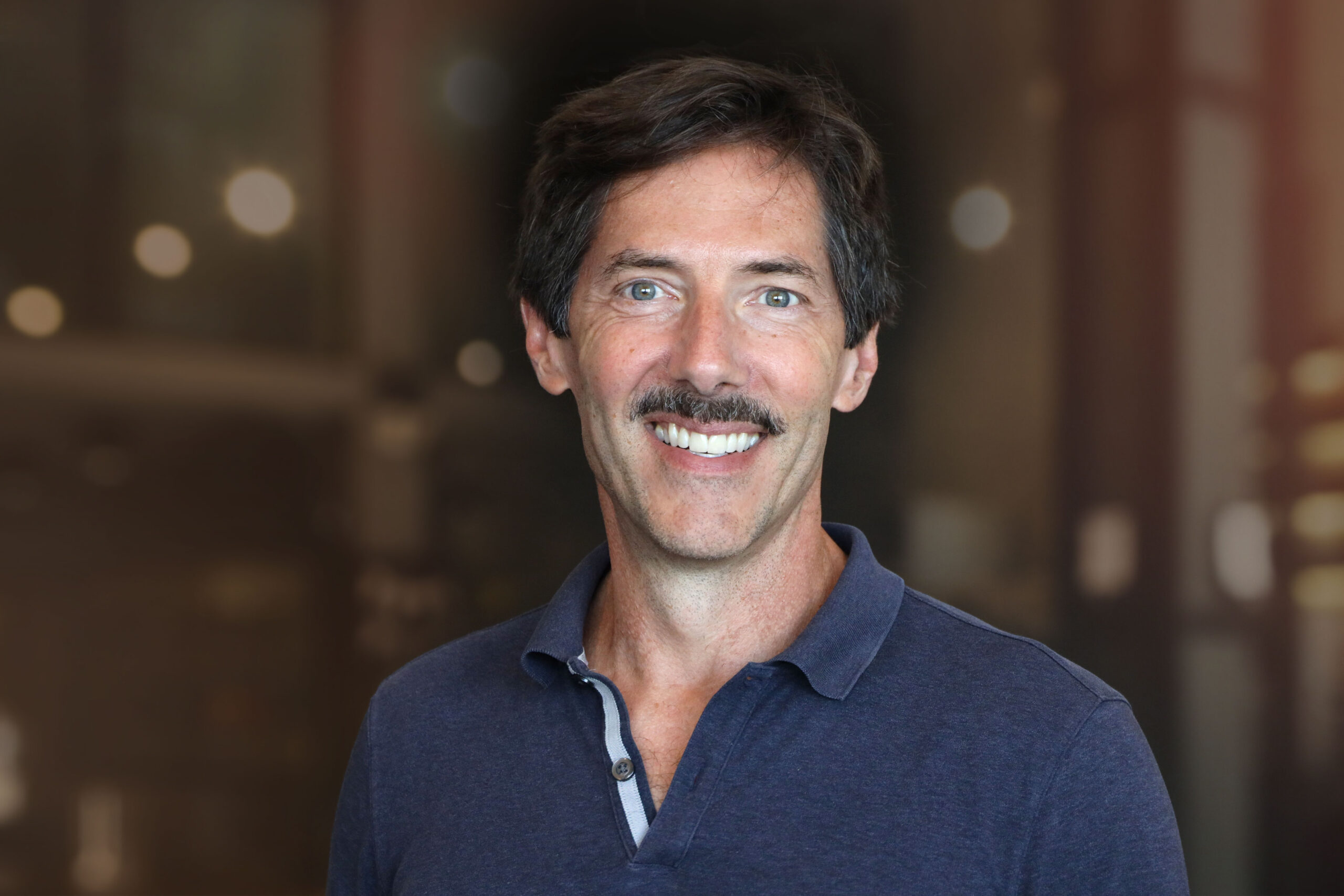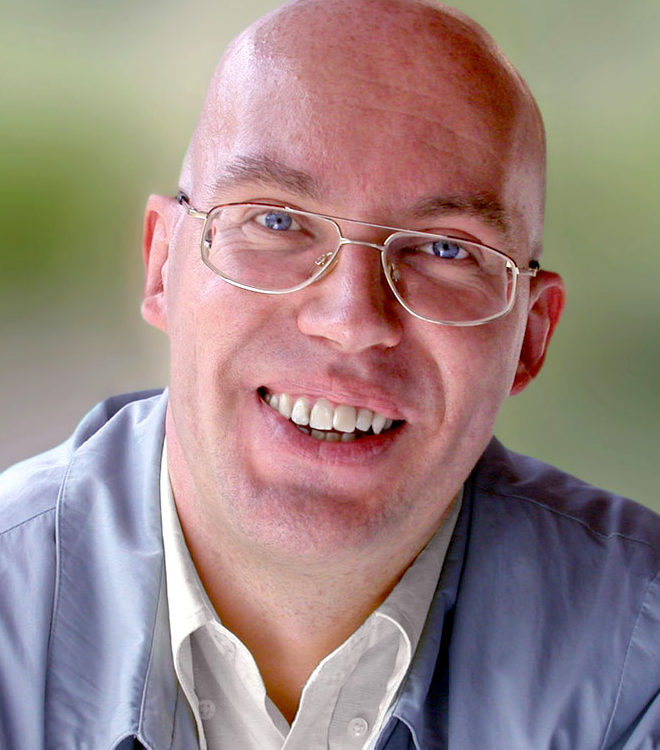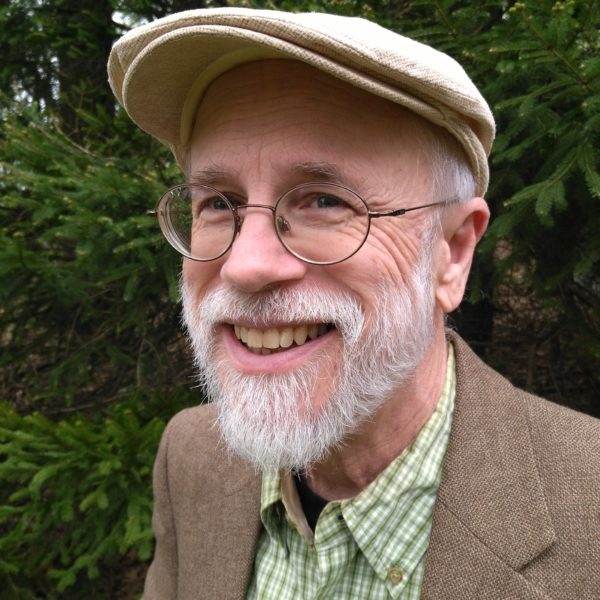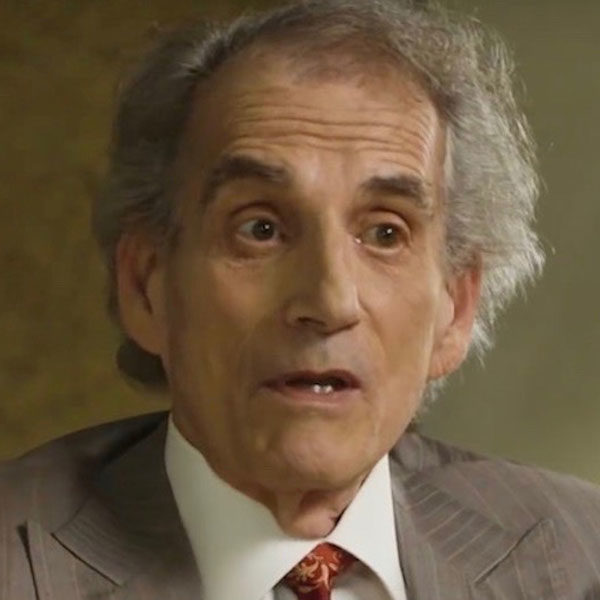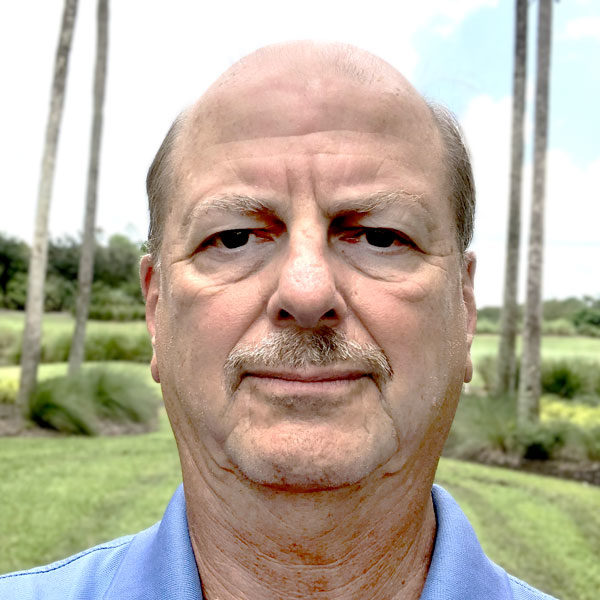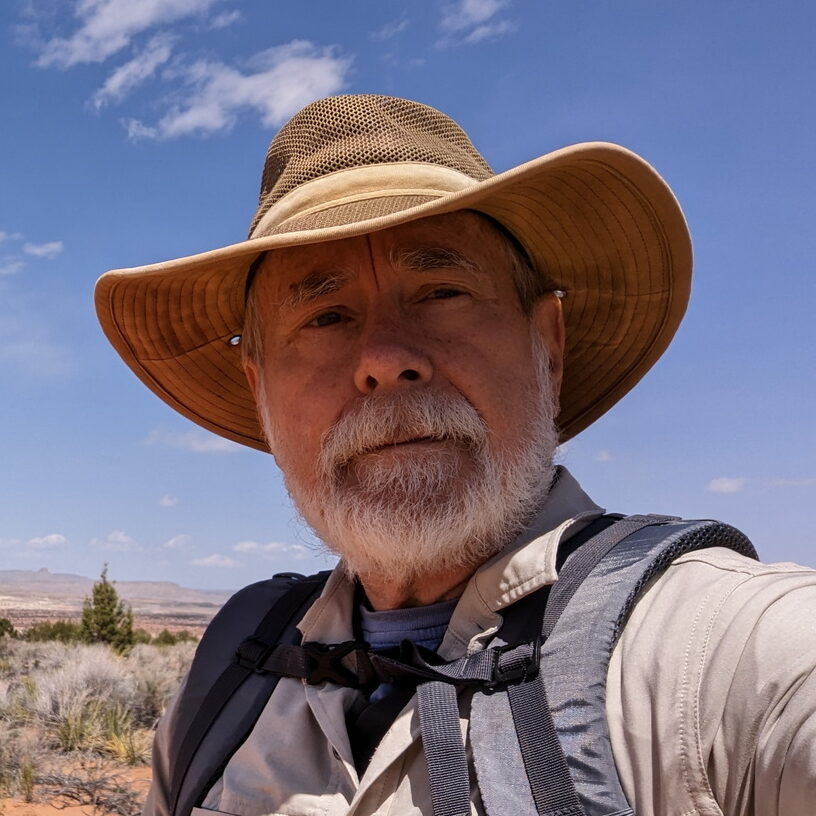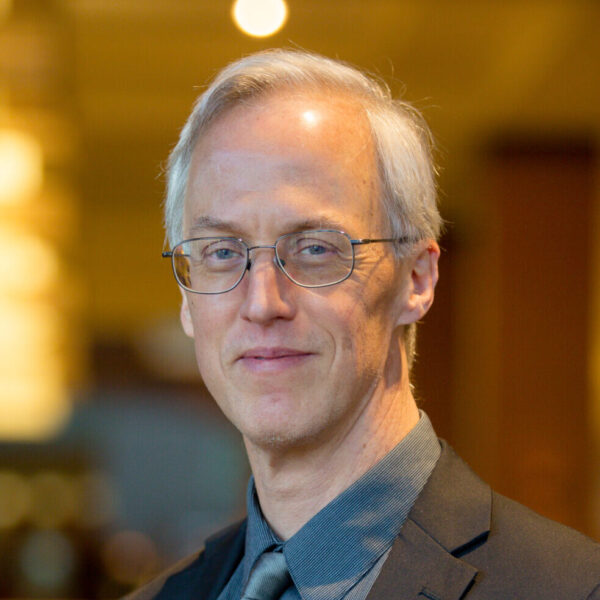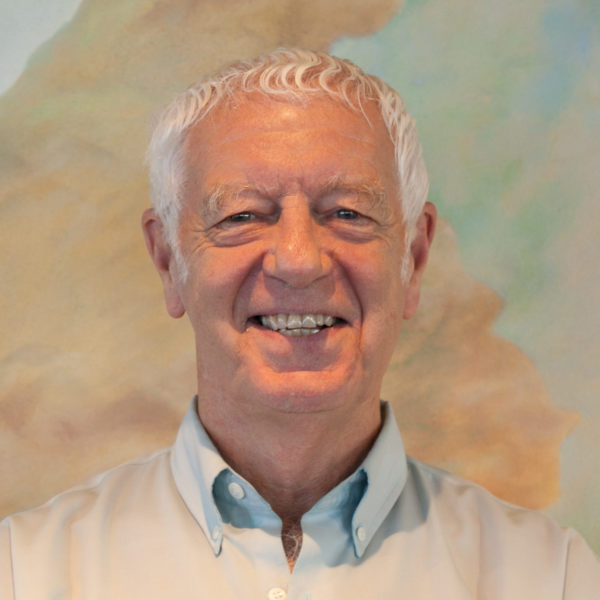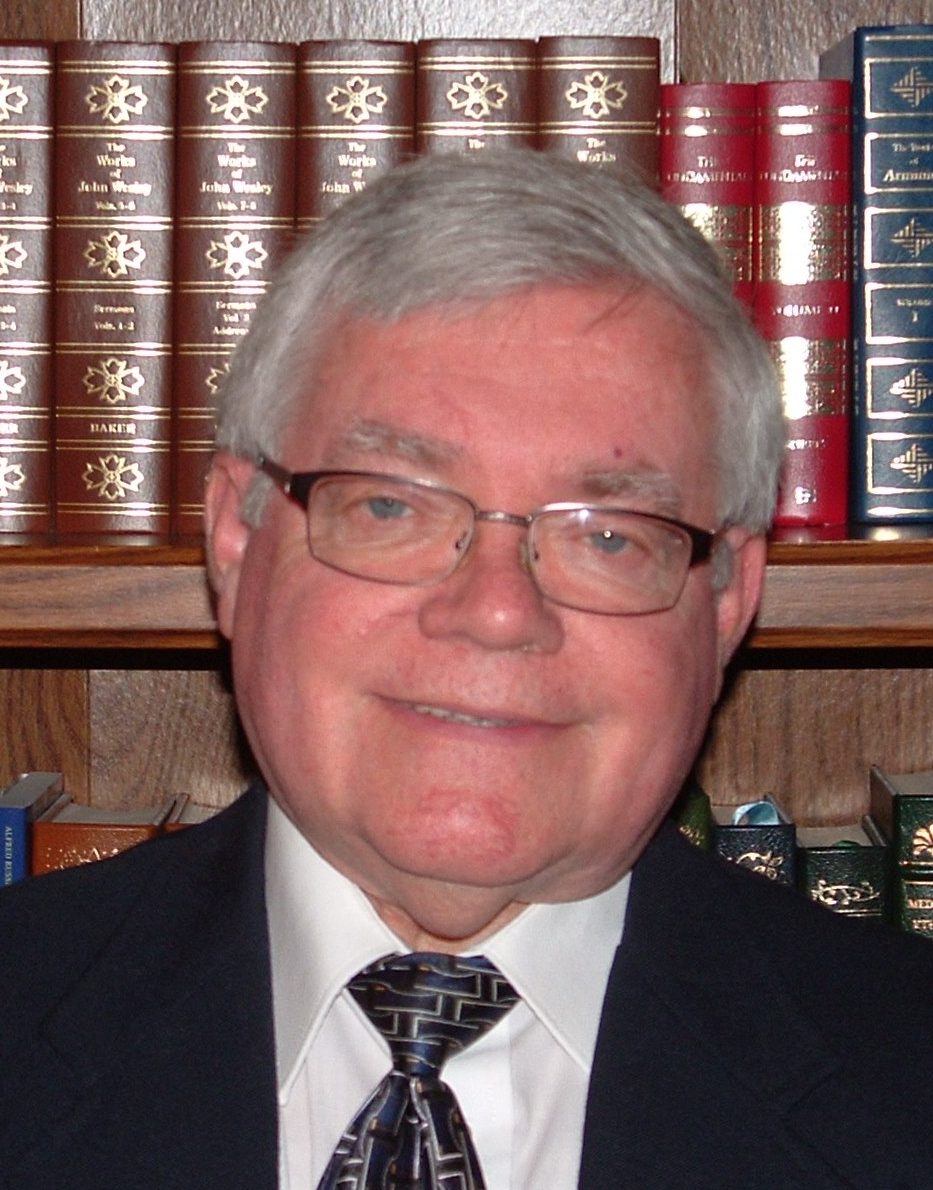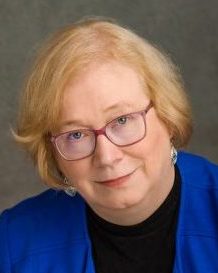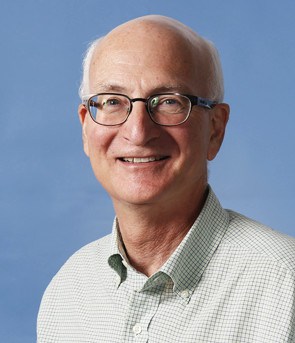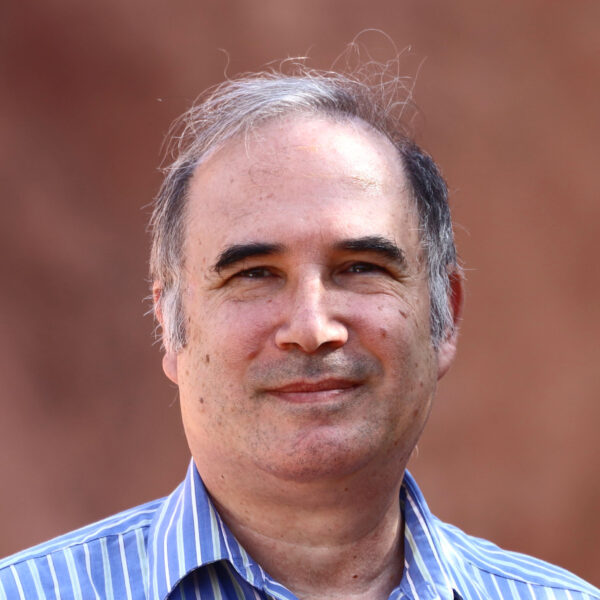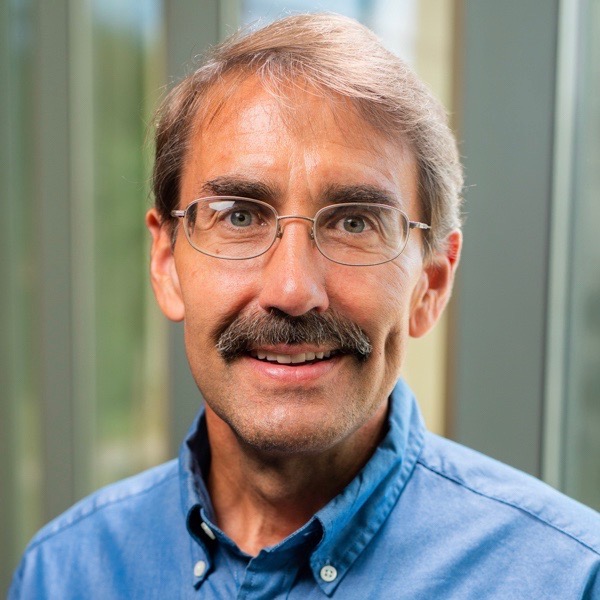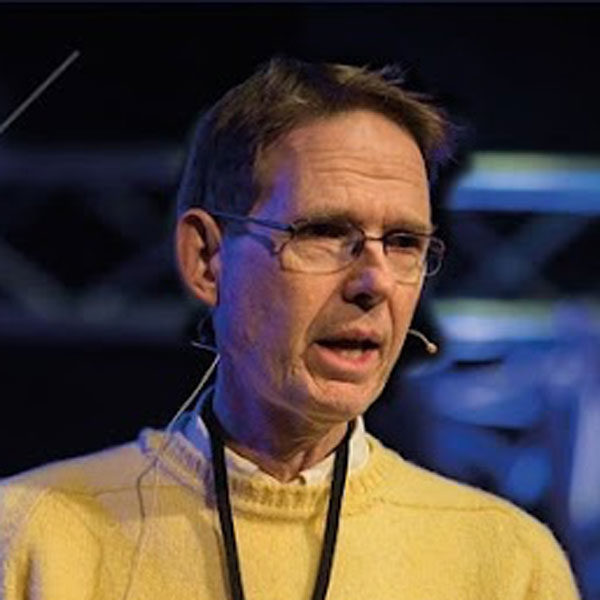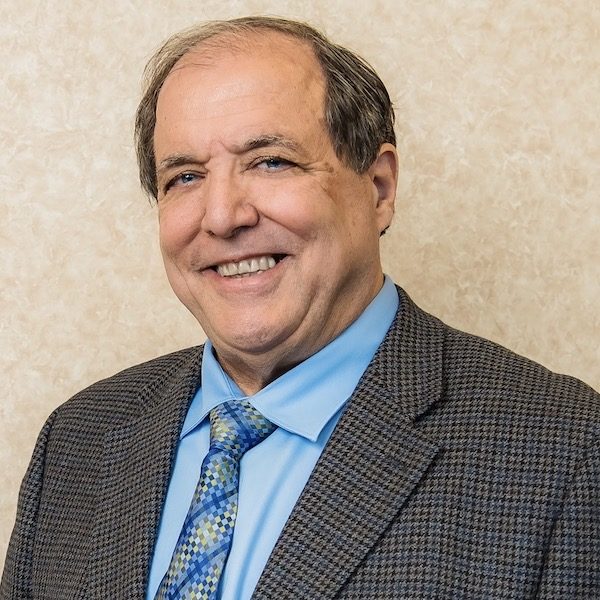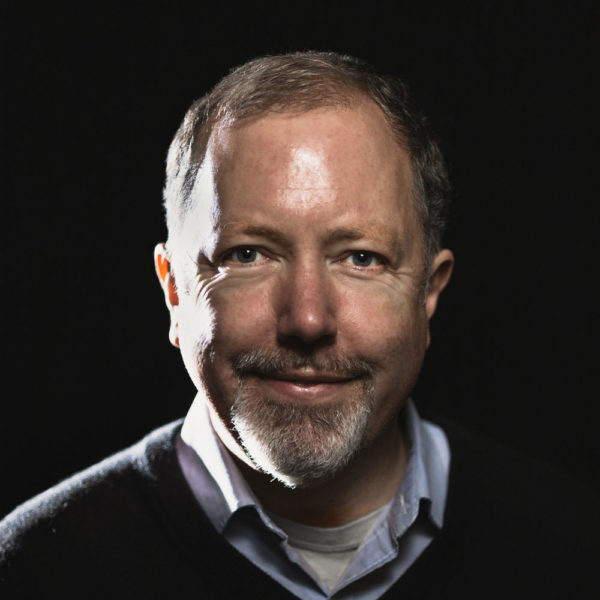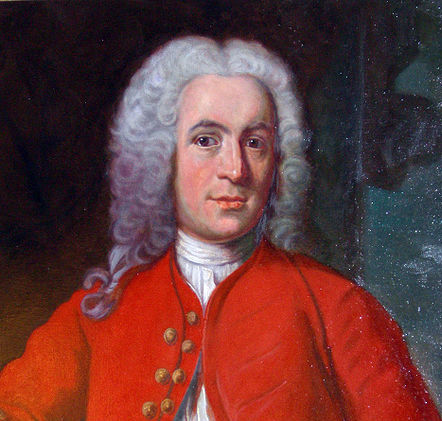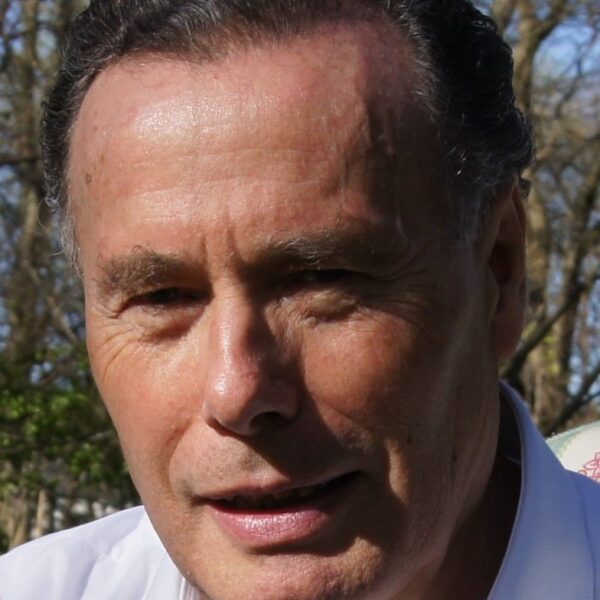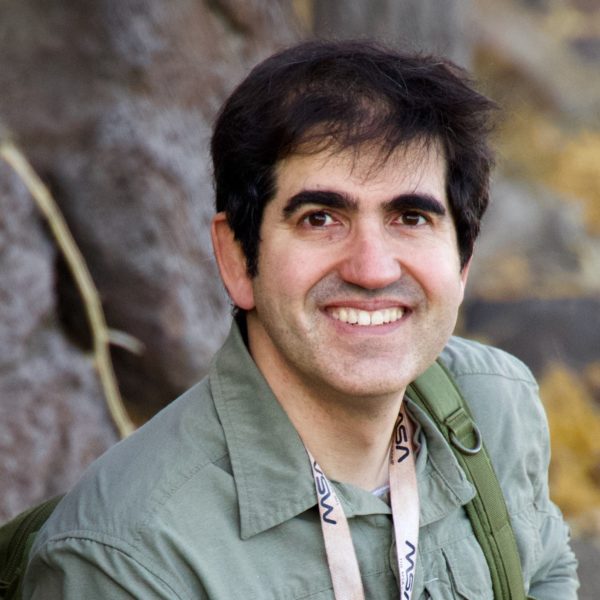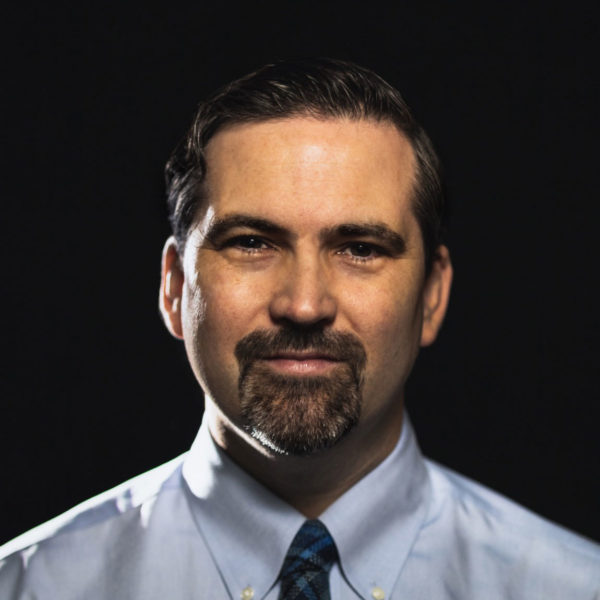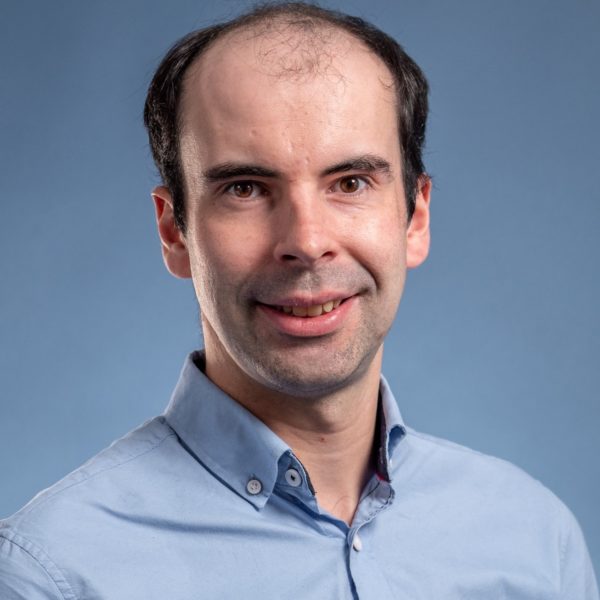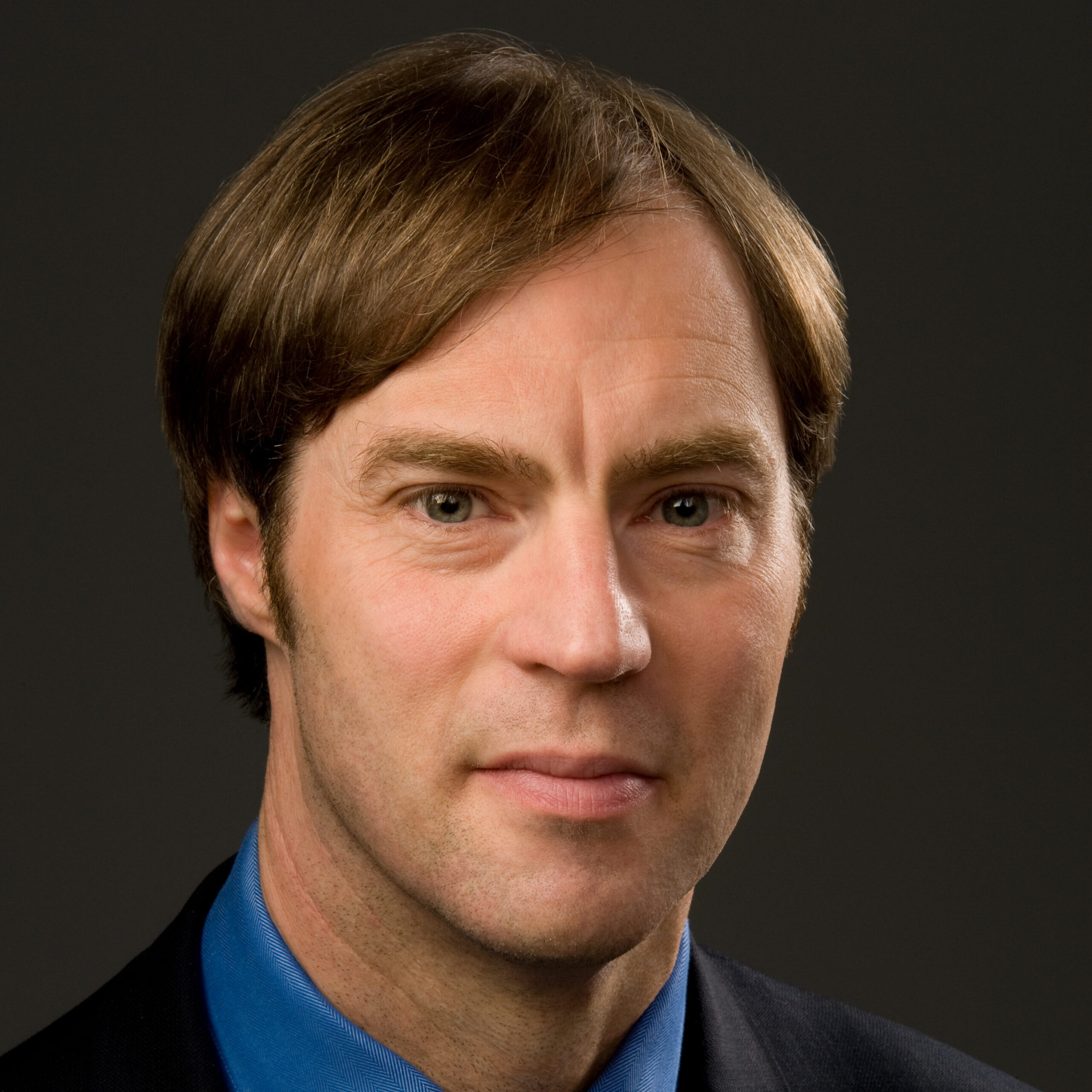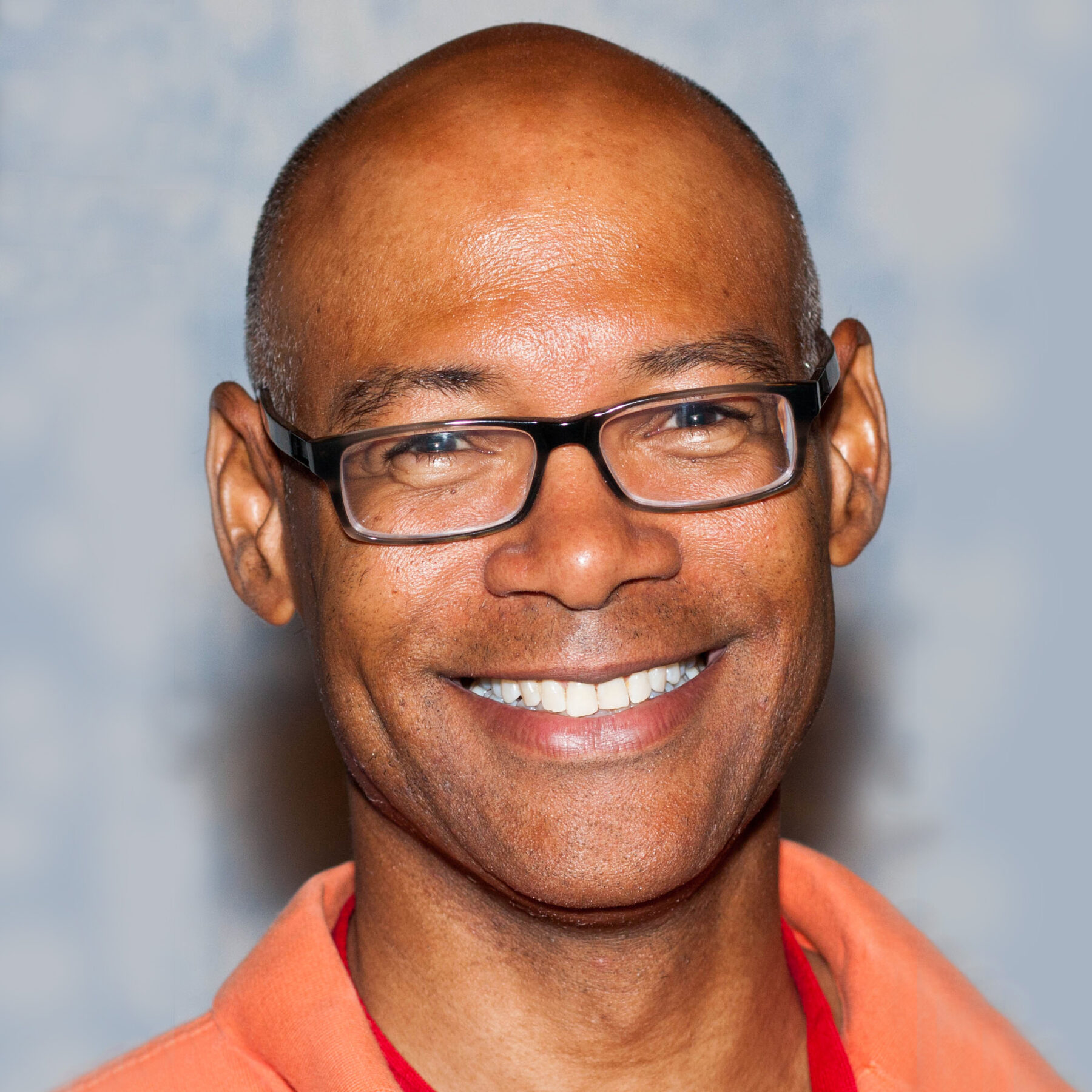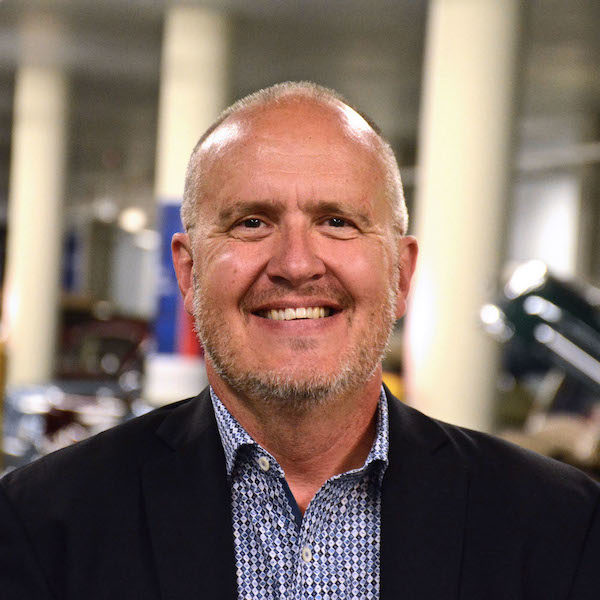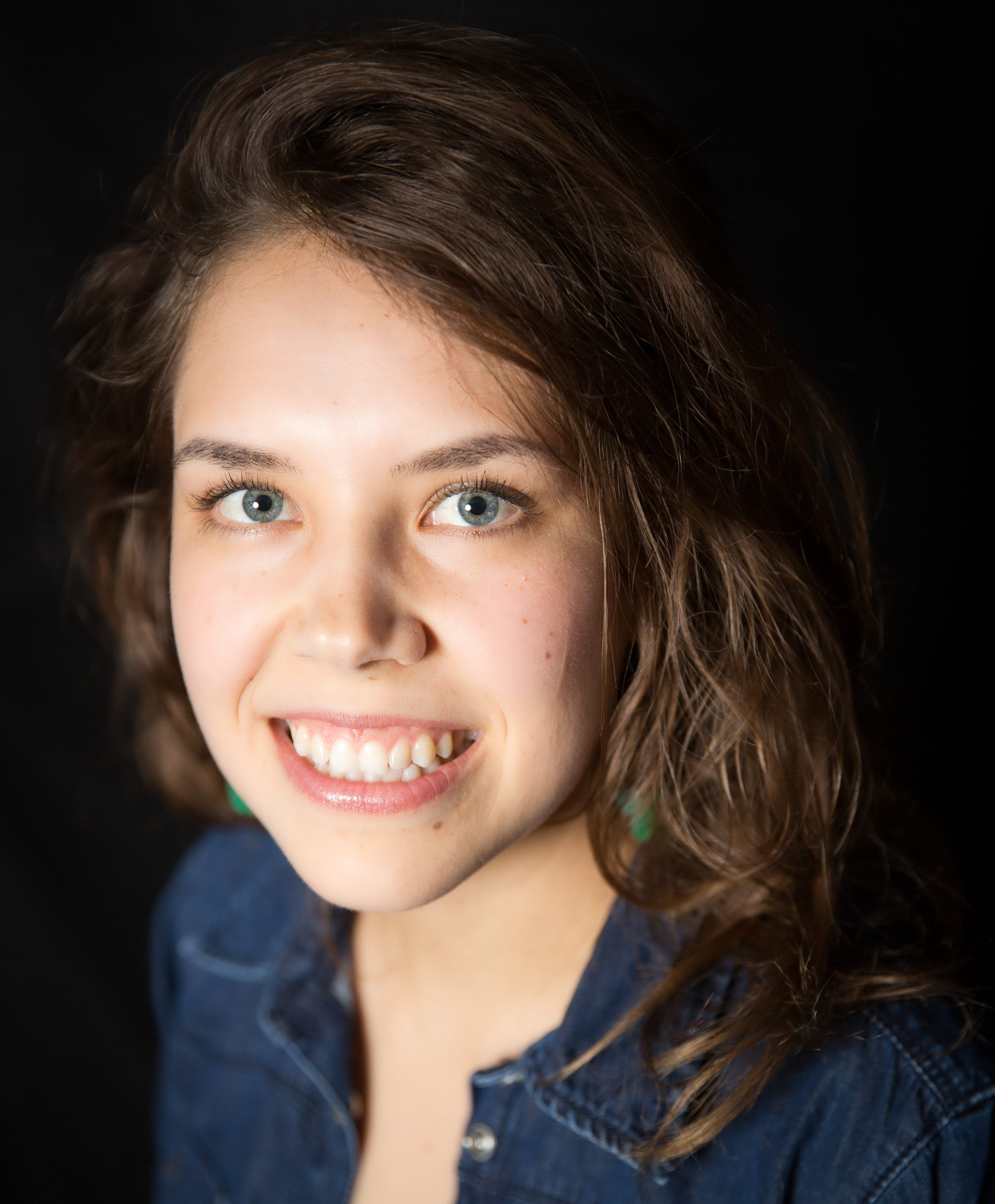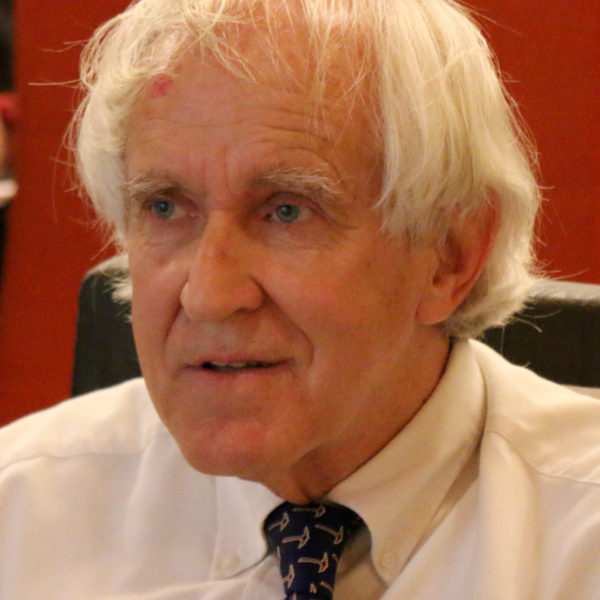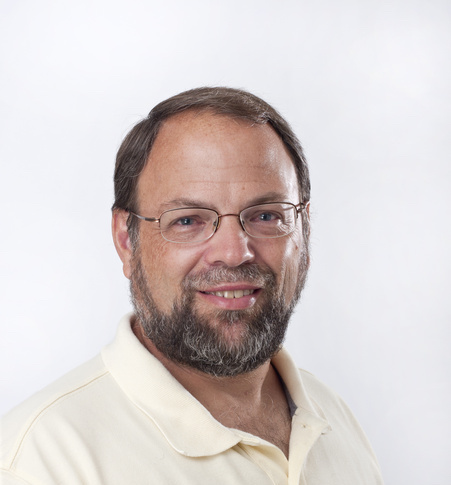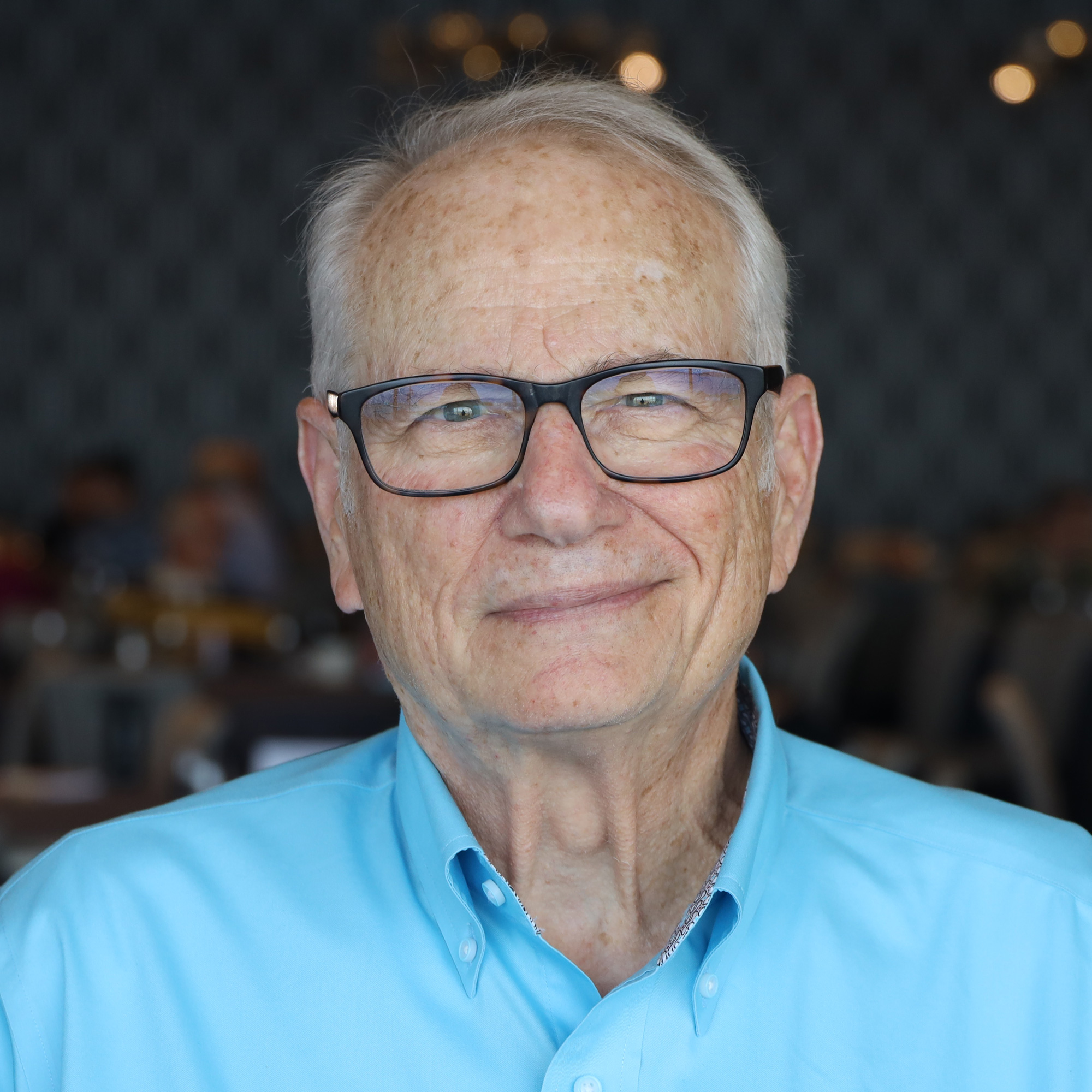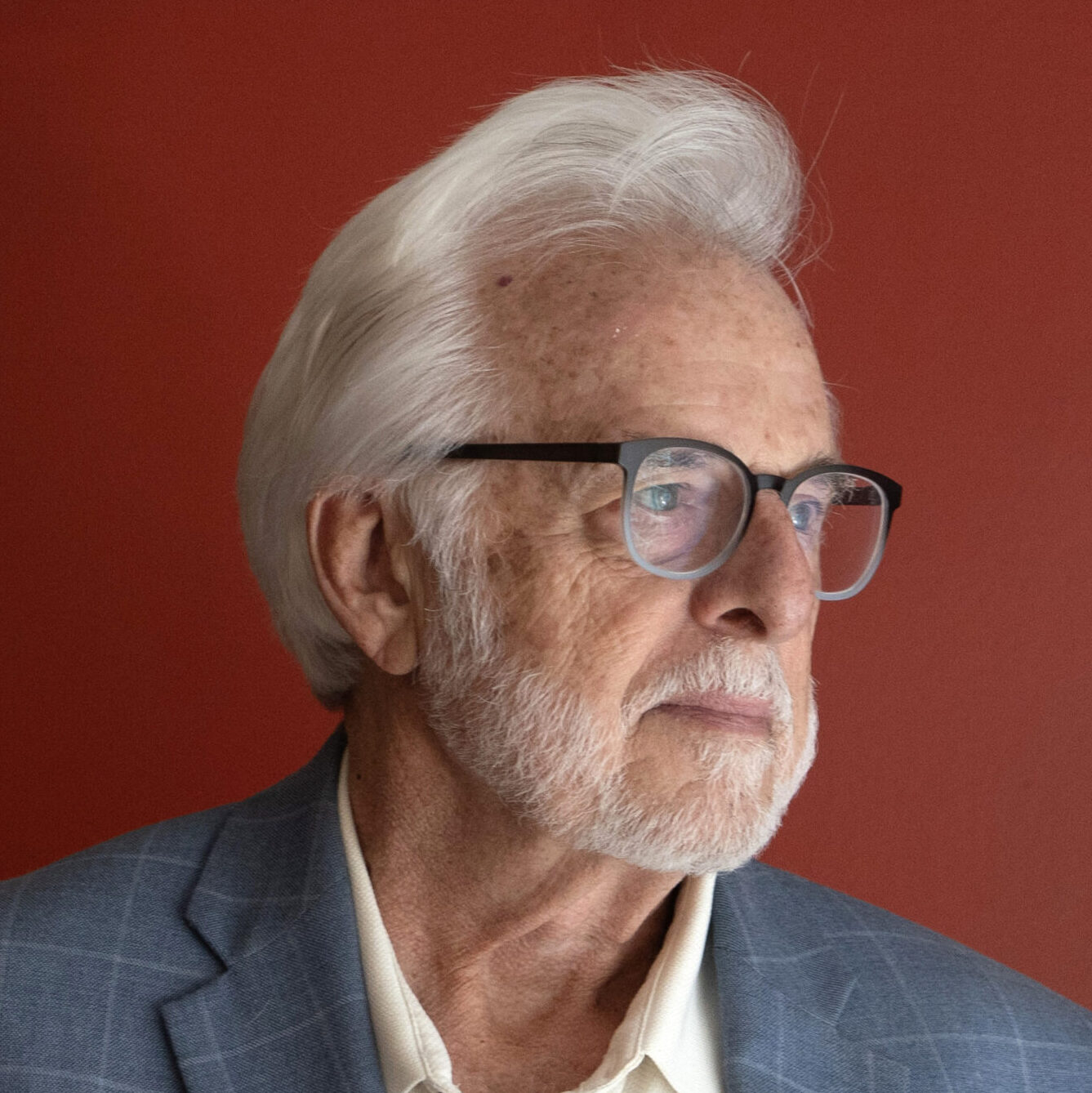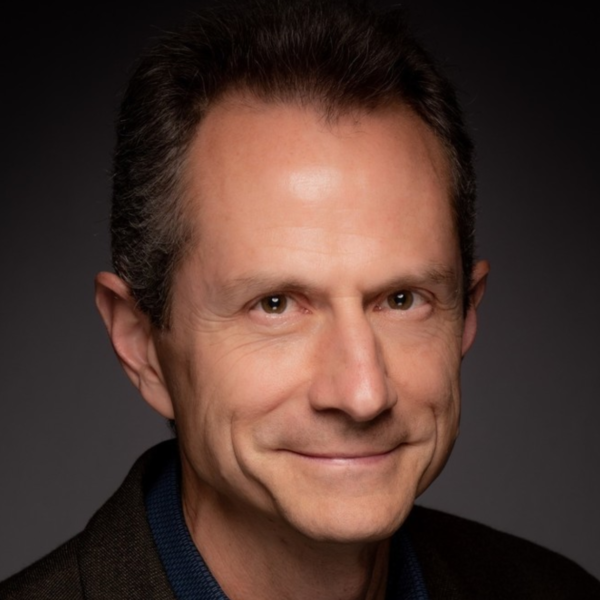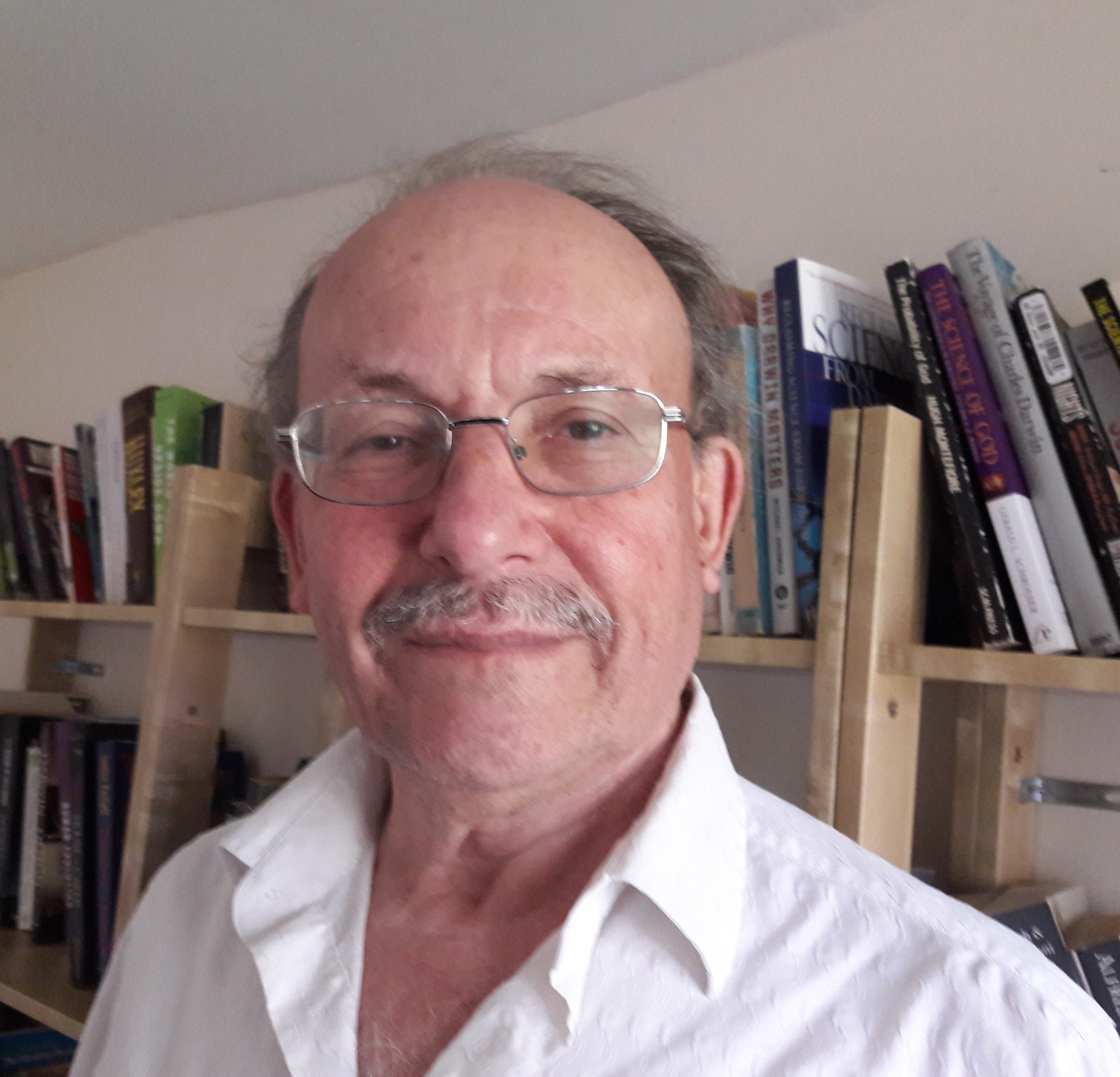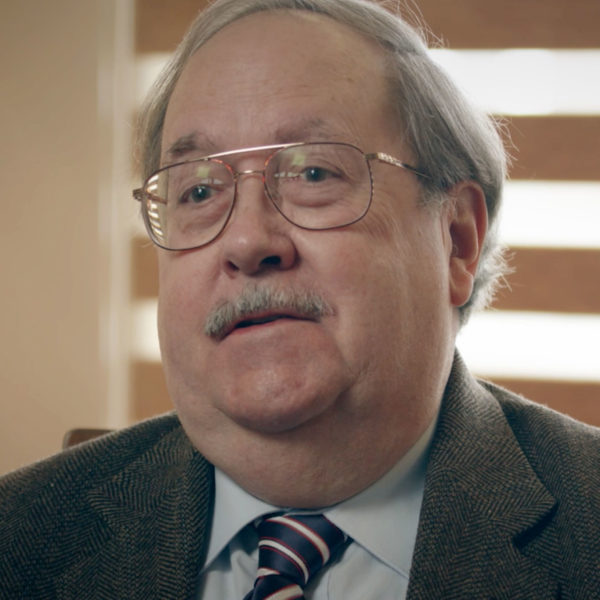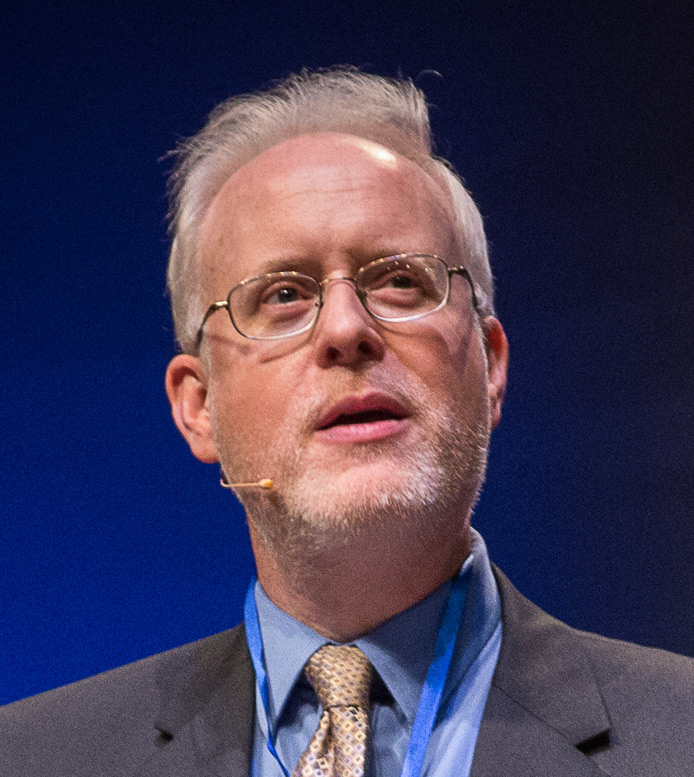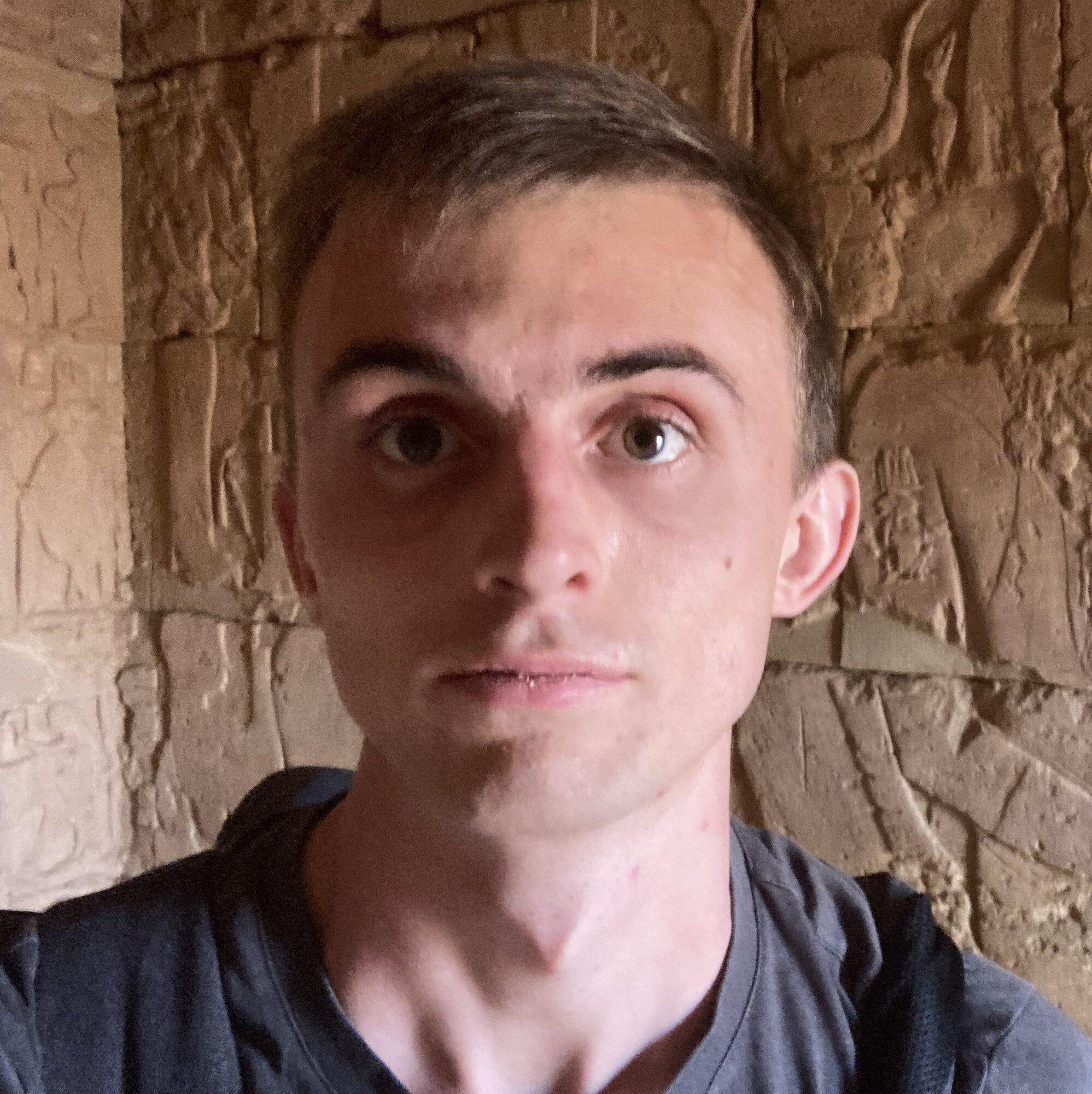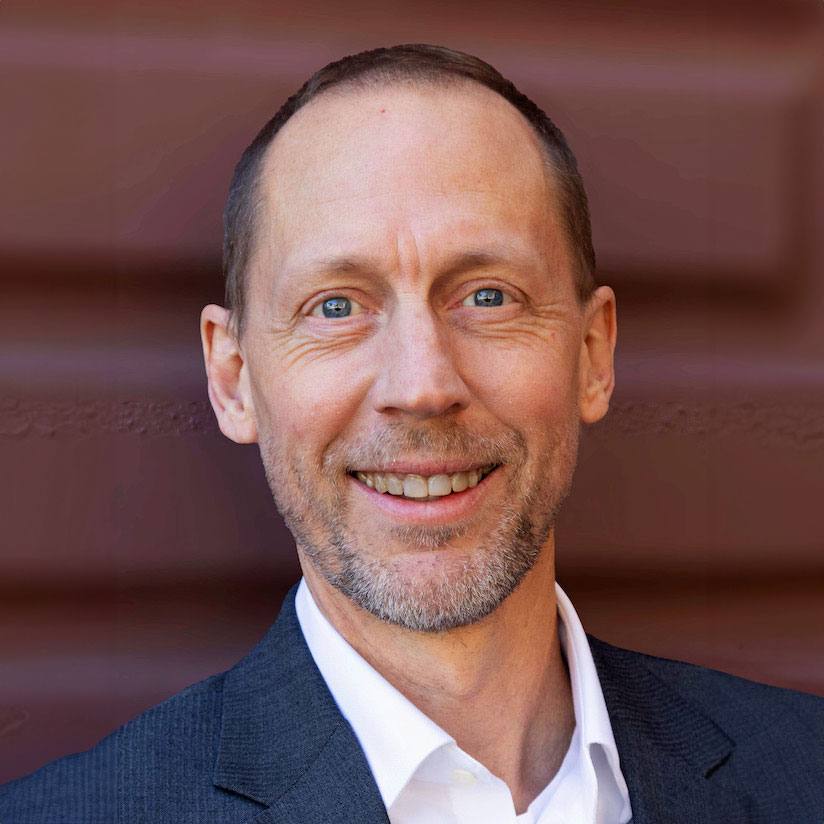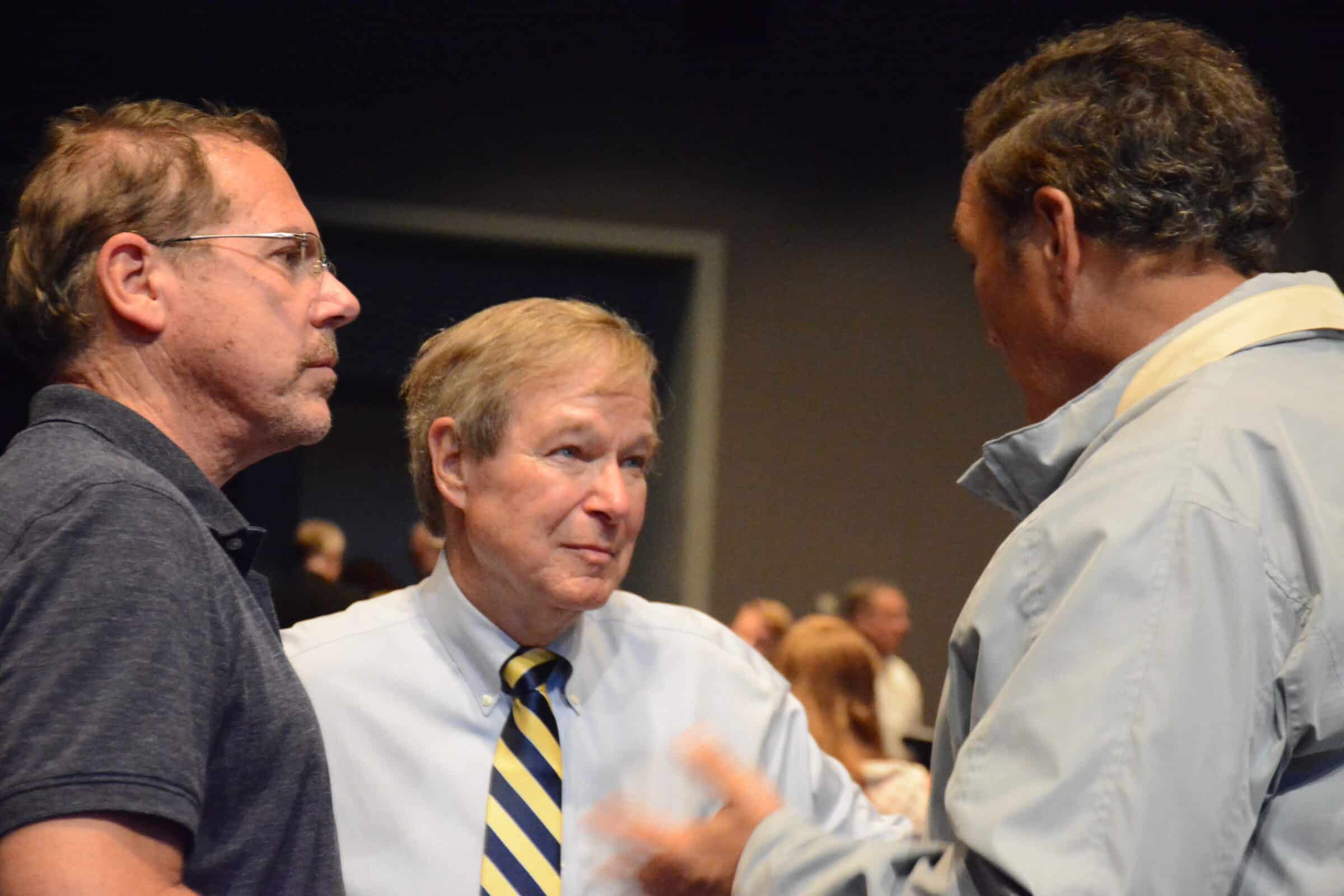Pivotal in launching the intelligent design movement, Walter Bradley died on July 2, 2025. He was 81.
I respected Walter enormously, as did Baylor engineering professor Robert J. Marks. We respected him so much that in 2018 we founded a center in his honor: The Walter Bradley Center for Natural and Artificial Intelligence. In addition, we wrote a biography of him, titled For a Greater Purpose and published in 2020.
That biography tells more than I can possibly recount in this remembrance. I could just summarize some of the high points of that biography here. But instead, I’m going to describe some of my personal encounters with Walter that are not in the biography. These I hope will bring to light the man in a fresh way.
The Mystery of Life’s Origin
I first encountered Walter not in person but in print. In the late 1980s, I became increasingly interested in randomness and its connection to evolution. My reading in this area included Richard Dawkins’s defense of Darwinism, The Blind Watchmaker (1986). But it also included two books critical of conventional evolutionary theory: The Mystery of Life’s Origin (1984) and Evolution: A Theory in Crisis (1985).
Michael Denton wrote the second of these books and in it offered the most powerful critique to that time of Darwinian evolution, explicitly raising the prospect of intelligent design as a legitimate alternative for explaining the complexity and organization of living systems. Interestingly, that book combined with Dawkins’ Blind Watchmaker prompted Phillip Johnson to enter the evolution debate.
Denton’s focus in Evolution: A Theory in Crisis was on biological evolution — how life changes once it is already here. The Mystery of Life’s Origin, whose publication date came one year earlier, focused instead on the origin of life. In other words, it addressed how you get life in the first place before biological evolution can kick in. Its focus was therefore on what’s called chemical evolution, rather than on biological evolution. Walter was one of the co-authors of The Mystery of Life’s Origin.
Both books were published with secular publishers, Philosophical Library for Mystery, Adler & Adler for Crisis. Adler & Adler is defunct. Philosophical Library continues to this day, but it exists entirely for its backlist and has long since let Mystery go out of print. In its heyday, Philosophical Library sought out and published the work of 22 Nobel laureates, including Einstein and Planck.
It was a big deal for these books to be published with serious secular presses. Criticisms of materialistic accounts of evolution (such as Darwinism) had previously been confined mainly to religious publishers. The western intellectual world had overwhelmingly embraced evolution as a purely materialistic process. To question evolution on religious grounds was seen as pitting religion against science, making religion the instant loser in any such debate.
I bring all of this up in a remembrance of Walter because it is crucial for understanding his impact on the intelligent design movement. The moment intelligent design is viewed as a religious doctrine, the controversy between design and materialistic forms of evolution (chemical, biological, or cosmological) becomes a religion vs. science controversy. Walter determined to shift the controversy to one of science vs. science, which it is and without which intelligent design cannot succeed in scientific discourse.
Getting Mystery published with a secular press required writing it as a rigorous scientific account of origin-of-life research. Thereby moving Mystery outside the religious publishing ghetto was Walter’s plan from the start. Walter had teamed up with Jon Buell (1939–2020), who founded the Foundation for Thought and Ethics (FTE). The purpose of this non-profit organization was to publish books of sufficient quality and in the right venues so that they could effectively challenge the scientific materialism that had infected all branches of culture and science.
(Jon Buell was a crucial early figure in the intelligent design movement, who died just as the Covid pandemic was taking hold. I worked for him as academic editor of FTE for over a decade, and wrote a remembrance of him at his passing, which may interest readers of this post.)
Initially, Walter was to be the solo author of Mystery. But Walter was also a full-time engineering professor at Texas A&M, in the field of materials science, where he specialized in polymers (which are crucial to all aspects of biology). To distribute the work load on this project, physical chemist Charles Thaxton and geochemist Roger Olsen were thus added to the team. Over time Charlie, as he is known, took charge of the project, becoming the lead author and assuming the role of academic editor at FTE under Jon Buell.
It is hard to overstate the impact of Mystery and its importance to the intelligent design movement. It’s not just that the book provided the single best treatment in its time of the consistent failure of materialistic scenarios to explain life’s origin — even NYU’s Robert Shapiro, who in 1986 published Origins: A Skeptic’s Guide to the Creation of Life on Earth, praised the book. Rather, it set the standard for what books and articles published by design theorists should aspire to:
- Rigorous argumentation without asking for special concessions.
- Meeting materialistic counterarguments on their own terms without invoking religious presuppositions.
- A charitable, generous tone that avoided the snarkiness of some scientific materialists as they attempted to discredit intelligent design.
- Proper credentialing so that those writing on a topic could be clearly seen to be qualified to write on it.
- And finally, as much as possible, publishing the work of design theorists in secular peer-reviewed venues so that this work could not be easily dismissed.
Michael Behe’s Darwin’s Black Box (Free Press, 1996) and my own The Design Inference (Cambridge University Press, 1998) checked all these boxes. Mystery opened the way, and Walter’s role in this book was pivotal. In 2020, a celebratory second edition of Mystery appeared with Discovery Institute Press, which included contributions by James Tour, Stephen Meyer, Jonathan Wells, Guillermo Gonzalez, Brian Miller, and David Klinghoffer.
1992–2002: Friendship and Collaboration
The first time I was in the same room with Walter was at a 1992 symposium at Southern Methodist University in Dallas. The symposium was titled “Darwinism: Scientific Inference or Philosophical Preference?” It featured Phillip Johnson and Michael Ruse. These two were the keynote speakers, and the event was organized on account of Johnson’s book Darwin on Trial, which had been published the year before and become wildly popular. Johnson took the anti-Darwinian design side, Ruse the pro-Darwinian materialistic side.
Jon Buell, of FTE, was the main organizer of this symposium. In addition to Johnson and Ruse, he invited several scholars who defended design as well as several who defended Darwinism, all to interact with each other in a vigorous but respectful debate. A proceedings of this symposium was published in 1994 under the title Darwinism: Science or Philosophy? The table of contents and links to the chapters are here. (Side note: I typeset this book in my first year as a seminary student at Princeton Theological Seminary to help make ends meet.)
It was at this event that I first met Phillip Johnson, Michael Ruse, and Jon Buell, all of whom have since passed on, and all of whom became friends of mine to the point that I wrote remembrances of each at their passing (see Johnson, Ruse, and Buell — Ruse was the last of these to die in November 2024). It was also at this event that I first met Stephen Meyer and Michael Behe, both of whom have been fast friends and colleagues in the more than three decades since this symposium.
Walter, though not officially part of the symposium, was invited to give a few words to the symposium speakers and those in the audience. I frankly can’t remember what he said. But he did strike me as a confident, high-powered, very smart guy at the peak of his abilities. Jon Buell introduced him and made it clear that Walter was a big shot at Texas A&M.
It may be that we all went out to dinner with the speakers and organizers after the symposium and that Walter was there. But my memory is fuzzy. Our first encounter was glancing. Yet, in subsequent years Walter and I became close, collaborating on conferences and books.
The next time I saw Walter was at a small, intimate gathering organized by Phil Johnson at Pajaro Dunes on the Pacific coast about an hour and a half south by car of San Francisco. This was in June 1993. Given the tremendous public visibility that Darwin on Trial gave him, given his powerful intellect, and given his influential platform as a UC Berkeley law professor, Phil quickly assumed leadership of the then burgeoning intelligent design movement.
Although the term “intelligent design” existed then, it was unclear what we would call our movement, which sought to establish design as a viable scientific research program for biology and cosmology. Our aim was especially on refuting Darwinism and thereby overturning the scientific materialism that in our view was infecting and subverting science, ruling out design by definitional fiat and not by any appeal to evidence.
In any case, Phil’s vision was to inspire a design revolution, and the meeting at Pajaro Dunes, for which he received a grant from some wealthy donors, was to kickstart it. In addition to Meyer, Behe, and me from the SMU symposium, Phil also invited eight or so others, including Douglas Axe, Paul Nelson, Jonathan Wells, and Walter. (Wells passed away last year, and I wrote a remembrance of him as well.) All of us became principal players in the ID movement. It was Phil’s vision to bring us together.
At the Pajaro Dunes meeting, Phil and Walter were clearly the senior guys. It was then that I got to know Walter. That meeting was the springboard to the modern intelligent design movement. After that meeting, Phil instituted as listserv through the UC Berkeley server to advance intelligent design. He even offered to pay for email accounts of attendees of the meeting (for those who didn’t have email) to ensure that we all stayed connected and could have each others’ backs. Phil’s community building proved important, and even prescient, in light of the coming backlash against intelligent design.
Some video from the Pajaro Dunes meeting as well as a brief mention of it can be seen in the Illustra Media documentary titled Unlocking the Mystery of Life, which is available on YouTube and which depicts much younger versions of ourselves (notwithstanding, the video has aged well and is still worth watching as a persuasive summary of intelligent design):
In subsequent years, Walter and I crossed paths with increasing frequency. We spoke at the same ID conferences and we contributed to the same anthologies. Walter would typically address the origin of life or the fine-tuning of the universe. I would typically address design inferential reasoning and the challenge of information to biology. Here is a sampling of books and conferences where we intersected:
- 1994: The Creation Hypothesis: Scientific Evidence for an Intelligent Designer, edited by J.P. Moreland.
- 1996: Mere Creation: Reclaiming the Book of Nature, conference at Biola University. I edited the conference proceedings, which appeared in 1998 under the title Mere Creation: Science, Faith & Intelligent Design.
- 1998: Consultation on Intelligent Design, Irving, Texas, organized by Discovery Institute. At that event I recall Walter and Charlie Thaxton hamming it up.
- 2000: The Nature of Nature: An Interdisciplinary Conference on the Role of Naturalism in Science, organized by me and Bruce Gordon.
- 2001: Signs of Intelligence: Understanding Intelligent Design, an anthology edited by James Kushiner and me.
During this period, Walter was a professor of engineering at Texas A&M. In 1998 or 1999, right as my first book The Design Inference came out, he invited me to speak on intelligent design at that university, with he and his wife Ann graciously putting me up for the night in their guest bedroom. And then again around 2001 or 2002 he had me at A&M again to speak, this time at a big campus venue (Rudder Theatre, if memory serves).
Walter, as an established senior scholar, was during this period trying to advance my ideas and career, and for that I’m grateful. He was always available to me and always willing to contribute to the intelligent design projects I was putting together. And I was happy to make myself available to him.
2002–2012: Baylor Days
I played a little-known role in bringing Walter onto the Baylor faculty, which I would like to describe next. For that, I need to give some background on my own connection with Baylor University.
Robert Sloan was president of Baylor from 1995 to 2005. It was a turbulent presidency with many missteps but also many right and even visionary steps. Sloan had been a dark horse candidate for the Baylor presidency. He was one of the few theologically orthodox Christians in the religion department. In part because of his visibility as a preacher, the Baylor board decided to install him as president in 1995.
Baylor, like many denominationally based schools (Southern Baptist in this case), had largely left its theological moorings. Sloan determined to change that, making Baylor a theologically sound, evangelically based research university. At the time, Baylor’s reach was regional rather than national and its faculty focused more on teaching than research. To help Baylor enter the “big time,” Sloan also made Baylor a charter member of the Big 12, the powerhouse athletic conference. The rationale for this move, as he explained it, was that high-profile sports enhances high-profile academics.
Sloan’s best friend, or certainly high on the list, was James Parker III, or Jim as he is known. I had become close friends with Jim, serving for a time as vice president of a Christian retreat and study center (The Trinity Institute) that he runs about 40 miles from Waco, the city where Baylor is located.
Sloan and Parker were a kind of Baptist Bobbsey Twins: they were the same age, were both from Abilene, had been to the same high school, attended Baylor together as undergraduates, gone on to theological studies at Princeton Theological Seminary, and then gone on for PhDs in New Testament in Basel, Switzerland.
Jim’s gifting was as a talent spotter for the Lord (the joke was that God loves you and Jim has a wonderful plan for your life). Jim saw in me someone who could help advance Sloan’s vision of turning Baylor into a top-flight, theologically faithful, research university. And so, in 1996, Jim arranged a meeting for me with Sloan. At the meeting, Sloan made clear that he wanted to get me on faculty at Baylor in some capacity.
Fast forward two and a half years. In January of 1999, I received a call from a representative of Sloan intent on bringing me onto the Baylor faculty. It was already clear to me that intelligent design was becoming controversial, so I indicated that I would prefer not to join a particular department (where I might face adverse departmental politics) but rather start an intelligent design think tank on campus where I could keep the focus squarely on developing intelligent design as a full-fledged research program (the hope being that a friendly Baylor administration would shield these efforts to advance intelligent design from hostile faculty members).
The Sloan administration signed off on this think tank: The Michael Polanyi Center for Complexity, Information, and Design. I came on faculty in the fall of 1999 to head it. Yet by the fall of 2000 the center had been dissolved. Pressure from both inside and outside Baylor caused the administration to cave. It didn’t help that I was naïve about campus politics and not good at hiding my anger and frustration (I write this not to my credit, though from this experience I learned some hard lessons that have kept me from committing the same mistakes).
The story of my demotion at Baylor is recounted in an interview that I’ve reprinted on my blog. It was also reported in the national press at the time. I stayed on as contract faculty at Baylor through May 2005, strictly as a research professor. I was so controversial on campus that no department was willing to let me teach. Consequently, I never taught a course at Baylor. It’s a point that comes up to this day because when people learn that I was on faculty at Baylor for over five years, they naturally ask what I taught there.
In retrospect, I should have left Baylor in 2000 or 2001 after things blew up there. This certainly would have been the right thing to do for my family. But I was stubborn and going “to show” Baylor. Institutions, however, can absorb a lot more wear and tear than individuals, a fact I came to appreciate.
Had the events at Baylor happened a few years later, I might have been one of the “expelled” in the Ben Stein documentary by that name. But that documentary came out in 2008, and by that time I was teaching at Southwestern Seminary in Ft. Worth, and life had moved on.
For Robert Sloan and his administration, intelligent design proved too hot to handle. I don’t know how many times I heard it said that the administration was “not willing to die on that hill,” the hill being intelligent design. They rightly saw their own future was in jeopardy on account of intelligent design, and that’s why they were willing to dissolve the Michael Polanyi Center and felt relief at the prospect of my leaving Baylor.
Nonetheless, an irony of my time at Baylor is that the administration still solicited my help in trying to bring on theologically sound Christian faculty who were recognized leaders in their fields. This they did even though consigning me to a small windowless office and making sure that no campus publication ever highlighted my achievements. For instance, I had two books during my time at Baylor, met with silence, that were awarded Christianity Today’s book of the year in “Christianity and Culture.” These were the sorts of accolades the administration would have been happy to tout in any other faculty member.
A difficulty the Baylor administration faced with me is that I made my reputation working in intelligent design per se. ID research was what I did for a living. Baylor faculty dismissive of intelligent design could thus attack the Baylor administration for hiring “a pseudoscientist who promoted creationism in the guise of intelligent design.” Nonetheless, the administration remained open to hiring ID proponents whose academic reputation was made in another field.
As it is, I had a rolodex of top-notch Christian scholars and researchers of the sort that Robert Sloan wanted to hire. And so, the Baylor administration tapped my shoulder to help enlist some of these scholars and researchers to make Baylor their academic home. There was one researcher in particular that they wanted me to reach out to—to make the initial foray to bring him onto the Baylor faculty. That was Walter Bradley.
The Baylor provost and I would meet occasionally for lunch, where he queried me about my contacts in the Christian world and took notes. In 2002, I must have shared with him that Walter’s career was in flux. Walter had been a very senior engineering professor at Texas A&M and even for a time headed the mechanical engineering department. He planned to retire around 2001 to head up Campus Crusade for Christ’s (now CRU’s) faculty ministry, known back then as Christian Leadership Ministries, and today as Faculty Commons.
But something fell through, and Walter’s position as head for CRU’s faculty ministry never materialized. The Baylor provost saw CRU’s failure to get Walter to head its faculty ministry as an opportunity for Baylor to hire him. The provost therefore asked me to jump on this and try to encourage Walter to join Baylor’s engineering school as a distinguished professor with a nice salary and an endowed chair.
Despite my differences with the Baylor administration, I still believed in their vision for Baylor. I therefore did as I was asked. I’m not convinced my role in Walter’s coming to Baylor was indispensable. I could easily see the Baylor administration contacting Walter directly and convincing him to come on board.
What was the Baylor administration thinking? They knew that Walter and I were friends. They were also acutely aware that Baylor had faced a backlash for marginalizing me and my work on intelligent design. The American Spectator, for instance, ran two stories that were unflattering to Baylor on what happened to me and my intelligent design center — see here and here. Perhaps they thought Walter would be reassured if I, despite all that happened, reached out to him. All this is, of course, speculation.
In any case, in the wake of my initial contact with Walter on behalf of Baylor — for whatever it was worth — he did end up joining the Baylor faculty. Walter came on part-time at Baylor in the fall of 2002. He and his wife Ann rented a hotel room for the week in Waco, and then would go back on the weekends to College Station, which is where Texas A&M is located. I remember my wife Jana and I visiting them at their hotel, which was right off campus.
That first year, Walter and Ann were testing the waters at Baylor. Yet by the academic year 2003-04, Walter came on full-time at Baylor, advancing the vision of turning Baylor into a theologically sound, academically first-rate research university. For the next ten years or so, Waco was the Bradley’s home.
Walter’s and his wife Ann’s impact on Baylor was immediate. They served as house parents of an engineering dorm, only later buying a house in the Waco area. Ann, as I recall, was active in women’s ministry on campus. Walter became a terrific spokesperson for the administration’s vision of integrating Christian faithfulness with academic excellence. Walter also opened his rolodex for hiring prospective Baylor faculty. His rolodex was far larger than mine.
In 2004, through Walter’s urging, his good friend and colleague Robert J. (“Bob”) Marks II joined the Baylor faculty, like Walter receiving a distinguished engineering professorship. In joining Baylor, Bob left a senior faculty position at the University of Washington in Seattle, where he had been for 25 years. Like Walter at Texas A&M, Bob at Washington University was a faithful Christian witness. Both were actively involved with Campus Crusade for Christ.
In terms of academic prestige, coming to Baylor was a step down for Bob. But Walter convinced Bob that Baylor’s vision for building a Christian university was something he needed to be a part of. How many other solid Christian scholars did Walter convince to come to Baylor? I’m sure there were many.
Bob Marks was an answer to my prayers. I had been working on implications of the no free lunch theorems in computer science and needed a conversation partner to talk through some of the implications of these theorems. Bob was a world-class researcher in computational intelligence, which included evolutionary computing, which in turn included the no free lunch theorems. Over the next decade, Bob became my closest collaborator as well as a fast friend. Together, we set in motion the field of evolutionary informatics, proving a number of important results under the rubric of “conservation of information.”
If I had to give an image of Walter’s time at Baylor, it is as a bee cross-pollinating the length and breadth of the campus, bringing fruitfulness wherever he went — fruitful Christian witness, fruitful academic scholarship, fruitful faculty and student relationships. Walter had a knack for engaging people, even those ideologically at odds with him, meeting them in their humanity and working through difficult disagreements with honesty and grace. I never saw him lose his cool. I never saw him pressure anyone into agreement. I never saw him react harshly. He was immune to intimidation. Consequently, I always saw him maintain a steady calm.
With Christian institutions, maintaining their faithfulness to Christ is always a challenge. An institution that is faithful in one generation may well become corrupted in the next. Baylor’s faithfulness as a Christian institution over the last 30 years, ever since Robert Sloan took the reins in 1995 and attempted to reassert its commitment to Christ, has been uneven. Some departments have been more faithful than others. Notwithstanding, Walter’s role at Baylor in advancing Christian faithfulness has been overwhelmingly positive. Whatever solid Christian witness Baylor has had over the last two decades can in significant part be credited to Walter.
“None of That Matters Now”
There’s a moment in the animated film Monsters Inc. when Mike laments that Sulley befriended the human child Boo. Mike and Sulley are monsters, and befriending a human child is strictly forbidden in the monster world. Because of that friendship, Sulley and Mike are exiled to the human world. As a result, they have to forfeit breaking “the all-time scare record,” the pinnacle of achievement in the monster world.
Here’s the exchange between Mike and Sulley:
MIKE: We were about to break the record, Sulley! We would’ve had it made!
SULLEY: None of that matters now.
None of that matters because Boo’s life is in jeopardy. For Sulley, friendship exceeds ambition as light exceeds dark. Sulley understands that he must do everything in his power to save Boo. Compared to saving a life, breaking the all-time scare record is nothing.
This example may seem unserious, but it illuminates Walter’s life. It’s easy to get caught up in Walter’s talents and achievements, that he was an academic big shot, that he could effectively navigate campus politics, that he was God’s man of faith and power, etc. Walter was an impressive guy. Tom Lehrer, in one of his musical comedy routines, remarked, “It is a sobering thought that when Mozart was my age, he had been dead for two years.” For many, comparing your life with Walter’s can make you feel like that.
And yet, to focus on Walter’s talents and achievements is to miss his heart. Much of my remembrance of Walter till now has focused on his achievements, his intelligence, his virtues. Everything I’ve described so far about Walter is admirable and deserves a place in a remembrance of his life. Nonetheless, speaking for myself, those are not the things that caused me to love him or want to write a biography of him. Rather, here are the sorts of things that made me think the world of Walter. They all reveal genuine concern on his part for the welfare of others:
- Offering to give my wife and me a night out. It was after Walter’s arrival on the Baylor campus that one of our children regressed and became severely autistic (non-verbal, low-functioning, needing a lot of help, even to this day). Walter and Ann were aware of this and offered to watch our kids, including our autistic son, when they were quite young so that we could have a night out.
- Touching lives for Christ. While living in Waco, I had a family practice doctor with whom for a time I attended the same church. In one of my visits to his office, we talked. He had gone to Texas A&M as an undergraduate. He remarked that it was through Walter that he had become a Christian. He along with many others.
- Helping people to thrive. While at A&M, Walter offered incoming undergraduates a mini-course on effective learning techniques, which included speed reading. The point was to improve students’ skills at learning to learn, and thereby help them to thrive in their studies at A&M.
- Removing drudgery from people’s lives. As an engineering professor at Baylor, Walter headed a two-week trip to Africa with fellow Baylor engineers and engineering students to build a bridge across a river. That bridge eliminated a 20-mile daily trek by locals to get to and from the other side.
- Empowering people in the developing world. Coconut farmers across the world lost much of their business because agricultural lobbies in the US aggressively promoted omega-3-rich vegetable oils (canola, soybean, corn, etc.) by vilifying coconut oil as “bad for you.” Walter helped these coconut farmers by finding alternative uses for coconuts, such as using the husks for composite fillers in automobiles. An irony in all this is that coconut oil is now considered healthier than the omega-3 oils (as the shelves with coconut oil at supermarkets attest).
Relevant to these last two points, Walter helped organize a 2008 conference at Baylor titled “Bottom-Up Approaches to Global Poverty: Appropriate Technology, Social Entrepreneurship, and the Church.” He saw this conference as a catalyst to fundamentally transforming the developing world for the better. Walter’s vision was to use appropriate technologies to empower people in the developing world to become economically productive as entrepreneurs.
People in the developing world would thereby lift themselves out of poverty without being saddled by IMF debts or other western shackles that in the name of philanthropy promise economic freedom but instead deliver economic servitude. Walter and I spoke often about trying to organize such a follow-up conference. Perhaps that can still happen. I’m in touch with a university that is interested in continuing Walter’s efforts and legacy to help the developing world.
If there was a secret to Walter, it is that he committed himself to putting the true God truly first. This enabled him to love God and people aright, and to be entirely forthright with students and faculty about his faith. As he put in his essay “On Being a Christian Professor in the Secular Academy,” he resolved on becoming a professor not to overwork or neglect his family or compromise his Christian witness.
With regard to his Christian witness, Walter determined to be clearly identifiable as a Christian professor to both his students and colleagues, fully aware that doing so might cost him his job. If he could not be an openly Christian professor, then he would leave the academy and work in industry. His willingness to walk away from the academy if he had to be less than true to his Lord gave Walter tremendous moral authority.
Walter Bradley was a philanthropist in the truest sense of the word. He loved people and lavished on them life’s most precious commodity. Time. His time. Time that is now up. I was tempted to write that his time is now “sadly up,” but no, he is in a better place and he has finished the work to which God called him. Walter gave his time generously to help people make their lives better, always directing them to the ultimate source of life — to “Christ in you, the hope of glory.” (Colossians 1:27)
